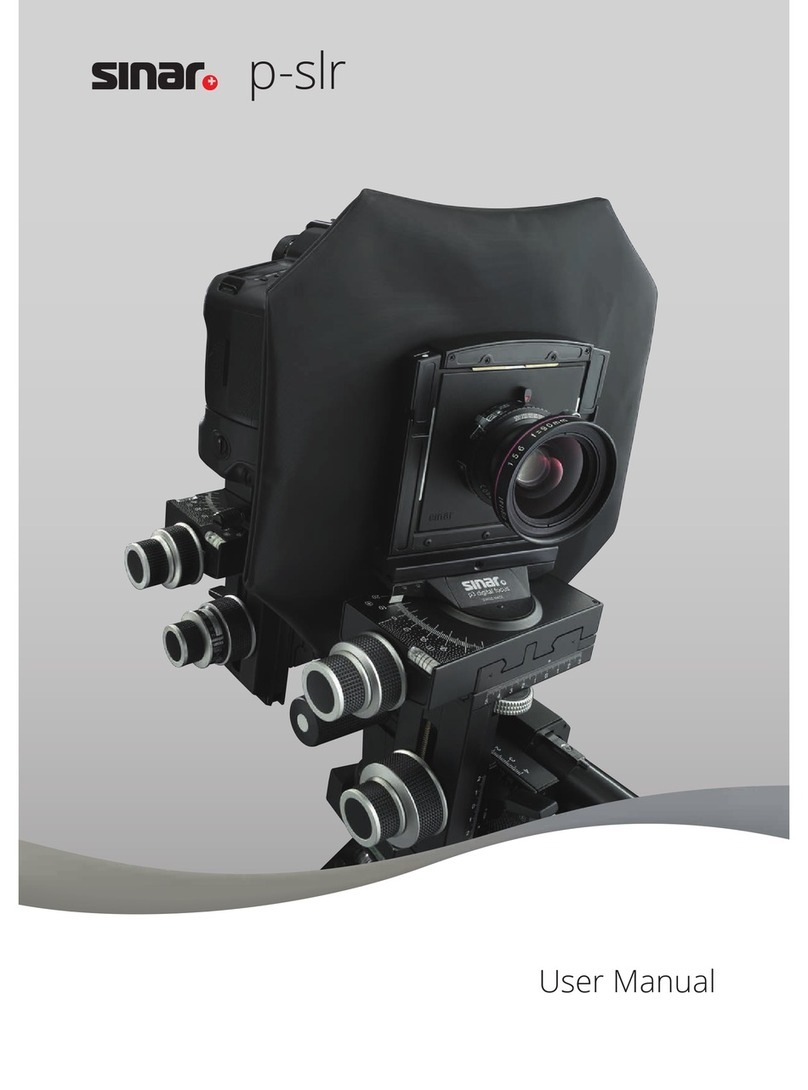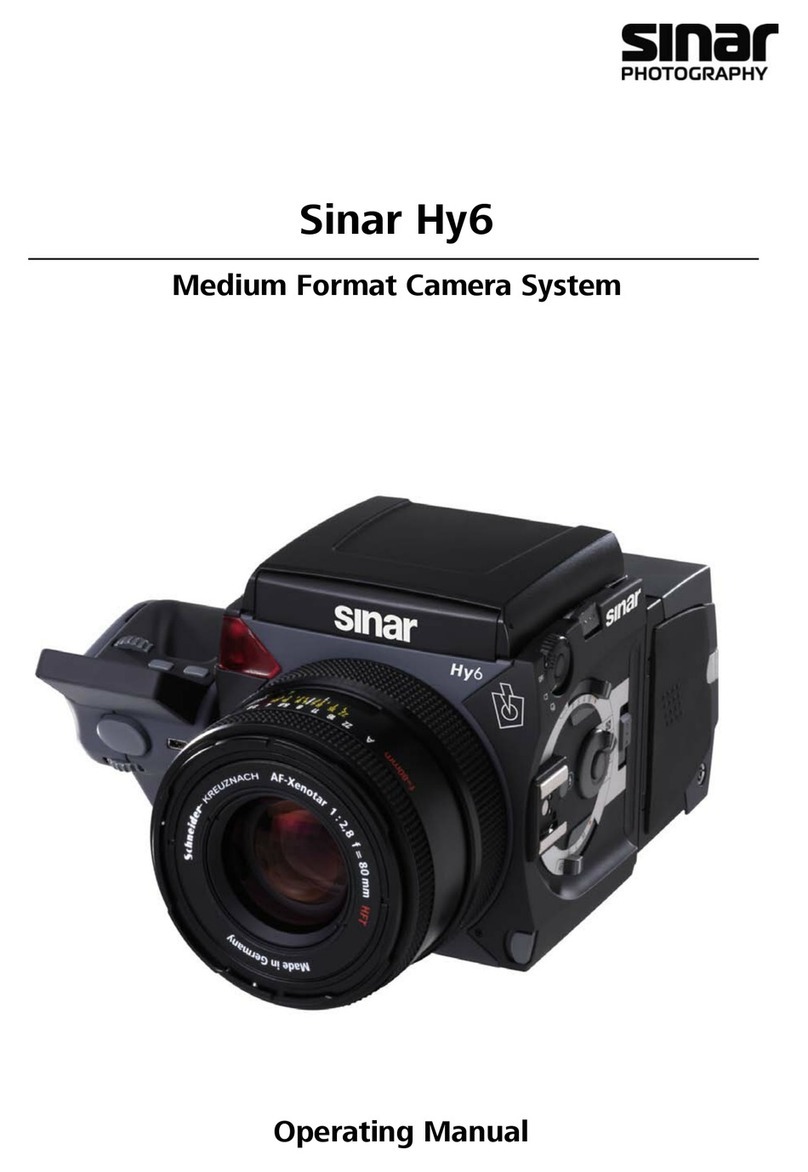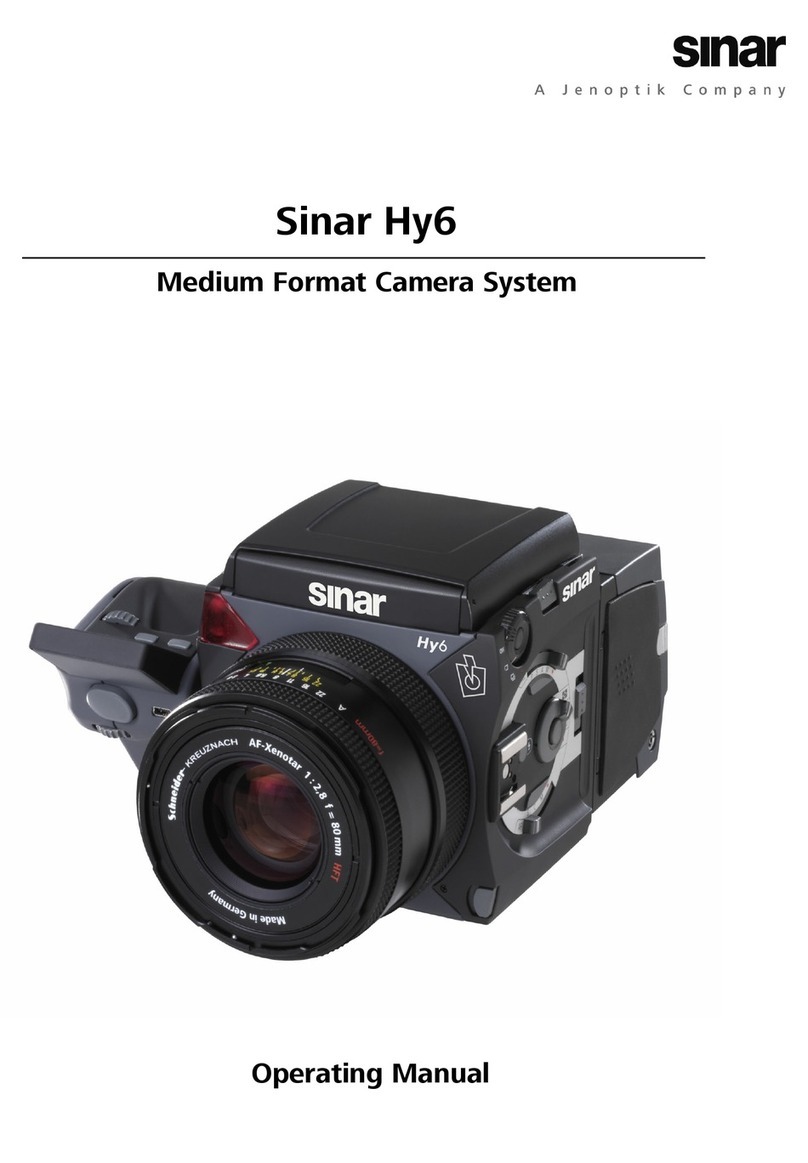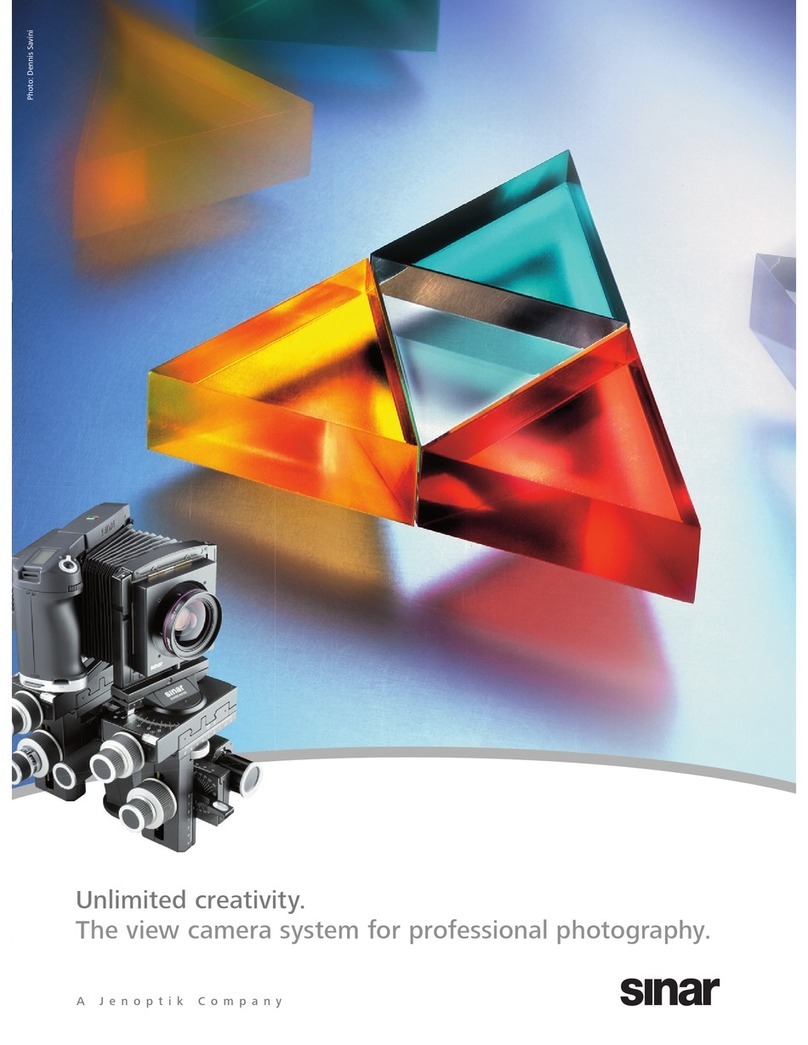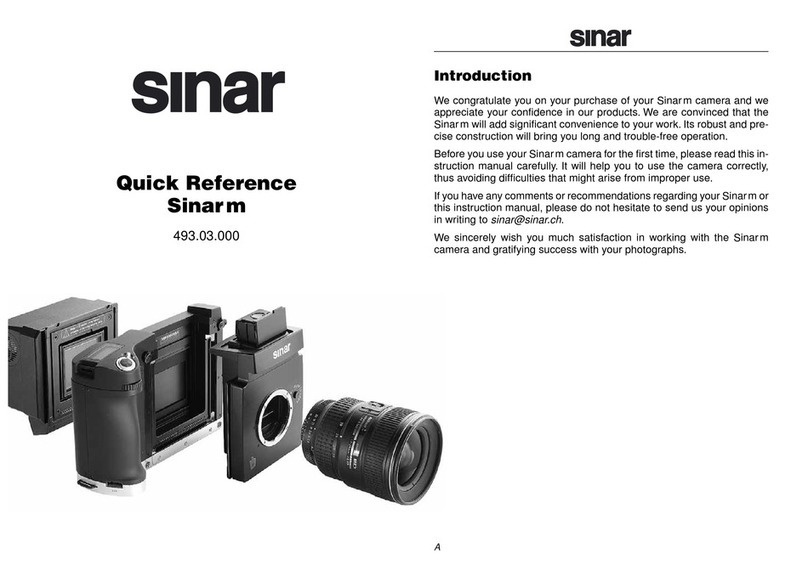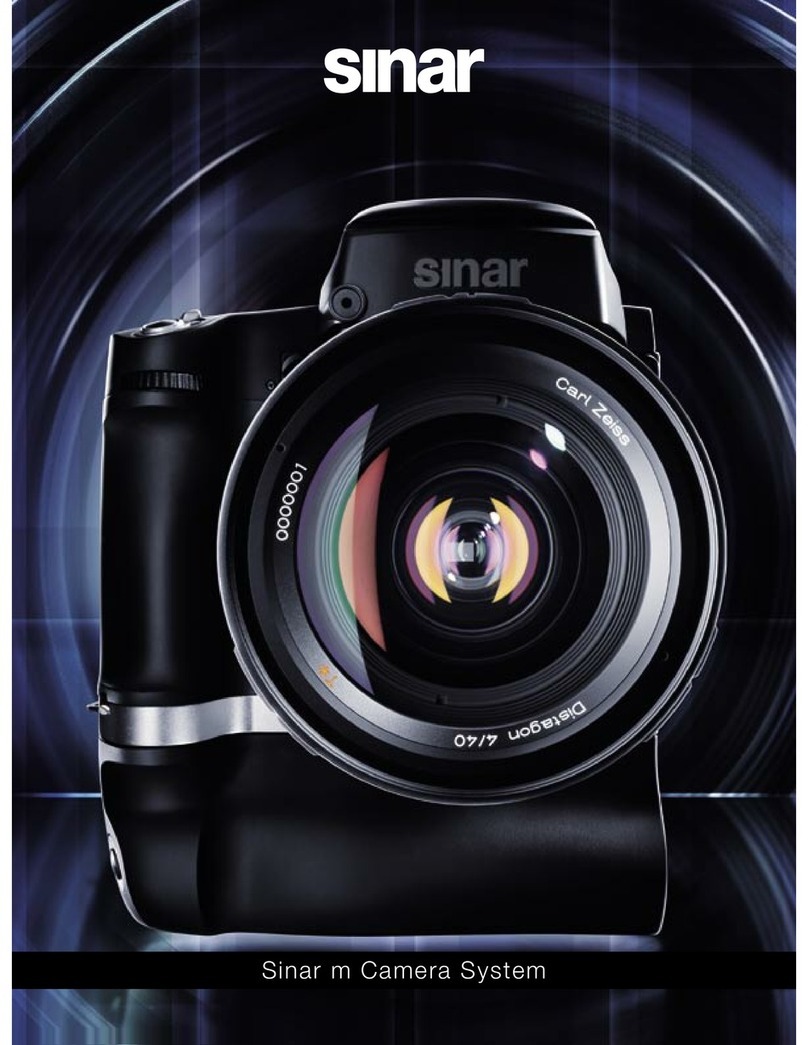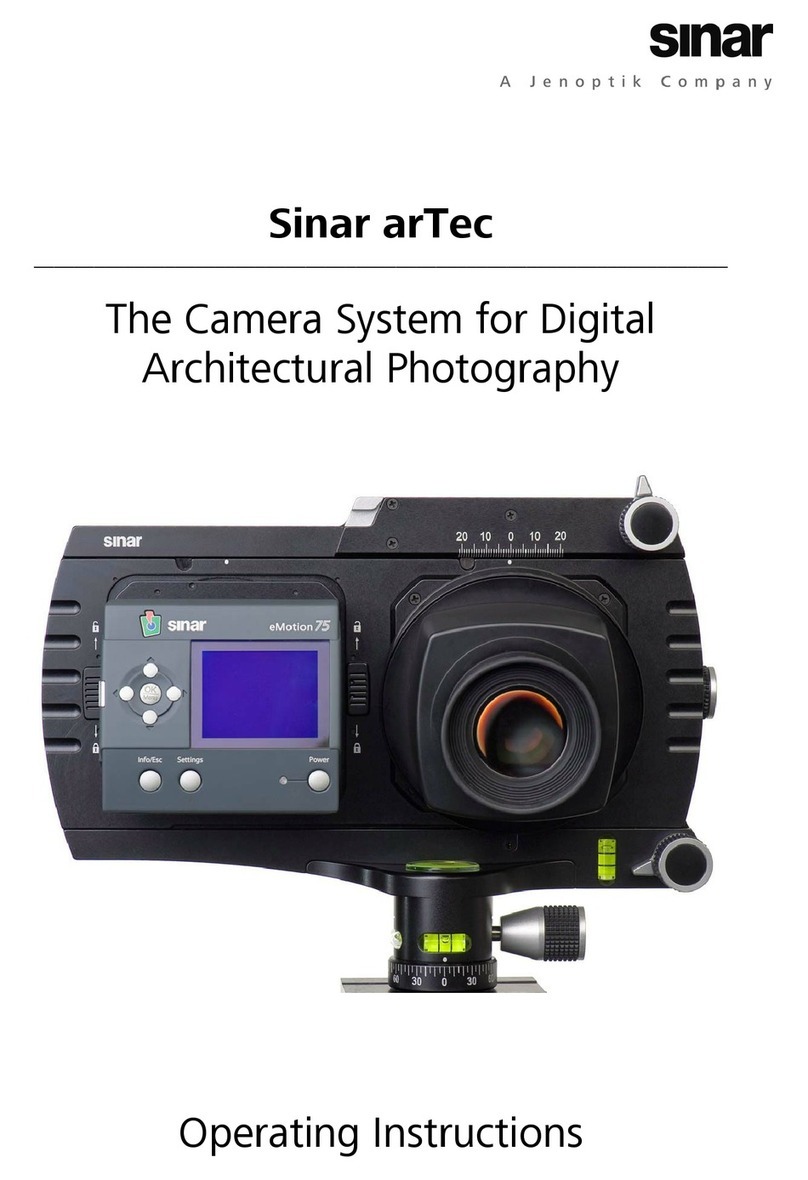
The bellows hood
The SINAR universal bellows,
two
bellows holders and a bellows rod or
jointed rod form the simple lens hood. SINAR accessories can also make up
a professional bellows hood, consisting
of
the bellows hood mask 1 or 2, a
bellows rod, bellows holder, multipurpose
standard
and universal bellows.
The bellows hood mask 2 has four micrometer-adjustable roller blinds with
mm scales for precise masking.
To
permit unobstructed shifts with short extensions
do
not attach the bel-
lows
to
the lens.
.Indirect shifts are preferable with the professional bellows hood -which is
more frequently used with long extensions.
For a clear view
of
the hood limits,
to
avoid image vignetting, stop down
to
the working aperture and sight through the cutaway corners
of
the ground
glass screen, with the eye close
to
the screen.
Viewing aids
Fresnel screens
With a Fresnel screen you more easily take
in
the whole screen image-and
see it brighter and with better contrast. Fresnel screens are available for all
three SINAR back sizes. The ground glass screen frames have retaining
springs for quickfitting and removal ofthe Fresnel screen.
The binocular magnifier and binocular reflex magnifier
A wide-angle or universal bellows attached to the screen frame keeps stray
light off the ground glass screen. This viewing bellows.
in
turn takes the
binocular magnifier and its hood.
With the magnifiers swung
in,
the screen image appears magnified 2x. The
binocular reflex magnifier also shows the image upright; it attaches directly
to the 4x5"/9x12 cm back.
To
view the whole screen image with the larger
sizes you also need a multipurpose standard and a tapered or wide-angle
bellows behind the back. Pairs
of
4.25-dioptermagnifier lenses are available
for both versions as
an
alternative
to
the standard 3-diopter lenses.
Masks
To
mask down the image on the ground glass screen when working with the
rollfilm holders we recommend the transparent yellow masks
of
the 534.16
mask set or the 534.12 vario mask, The masks are available with cutouts
from 4.
5x6
to
8.5x10.5 cm and fit the SINAR maskand Fresnel holder. They
are inserted in, and removed from, the screen frame
in
the same way
as
the
Fresnel screens.
9
